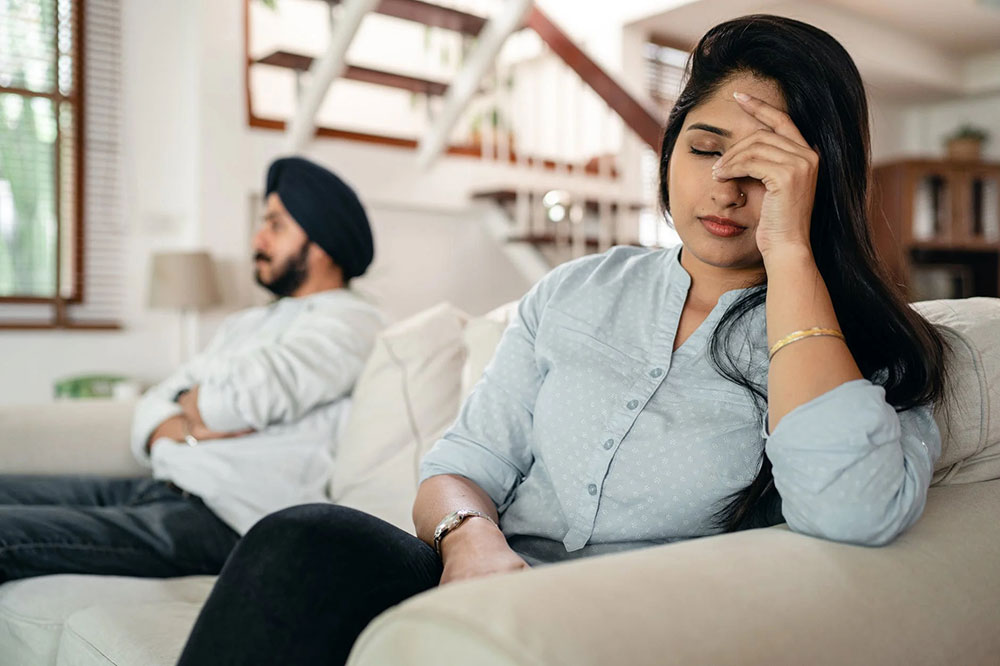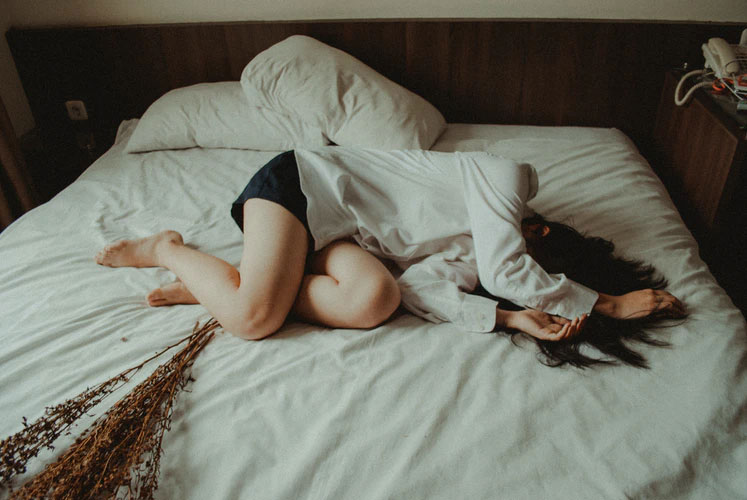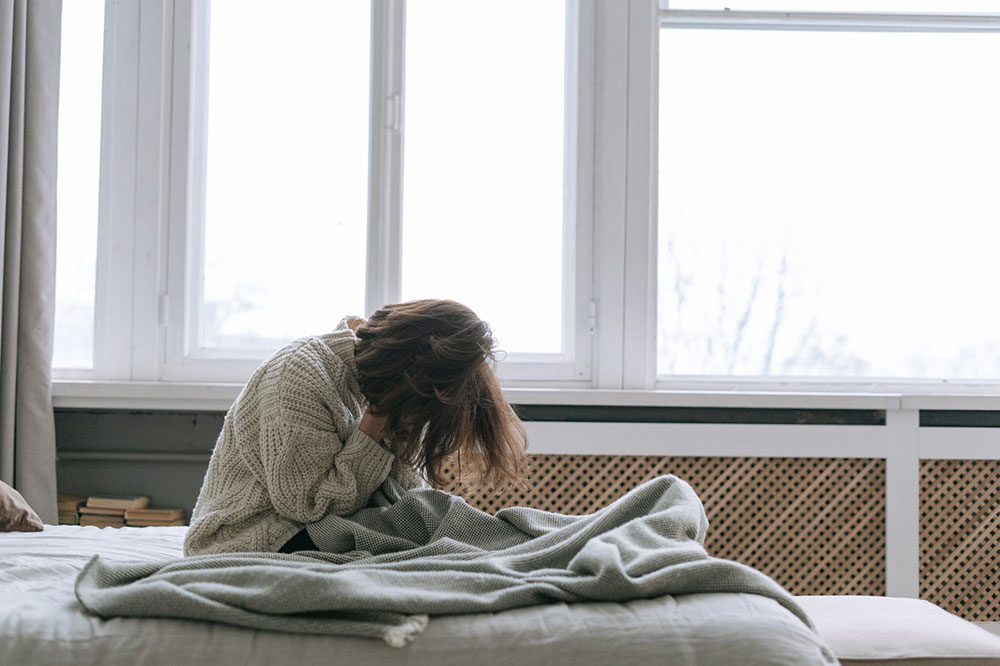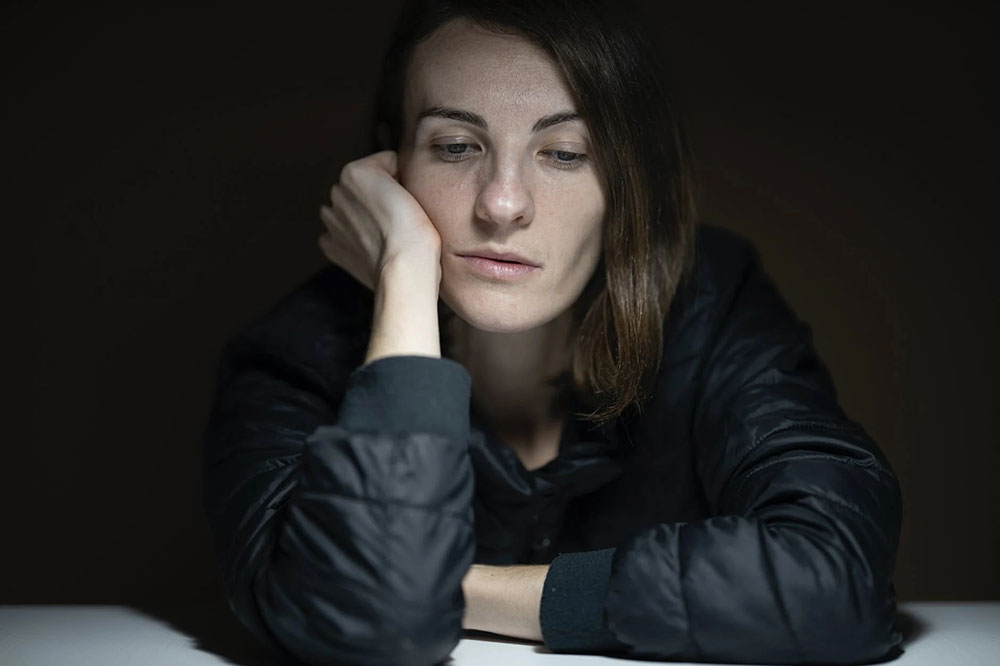It is natural to feel gloomy now and then, but if you feel sad and miserable all the time and it is impacting your everyday life, you could be suffering from depression. It is a condition that may be treated with medication, talking to a therapist, and making lifestyle changes.
However, before you start looking for ways to treat your depression, you need first to figure out what kind of depression you have. Depression comes in a variety of forms. (1) Some are caused by events in your life, while others are caused by chemical changes in your brain. Situational depression is one of the most prevalent forms of depression. (2)
Although, in psychiatry, this is not a technical term. However, you might be depressed if you are having difficulties coping with a stressful event in your life, such as a family death, divorce, or job loss. This is what your doctor may refer to as stress response syndrome. Psychotherapy can frequently assist you in overcoming a depressive episode brought on by a stressful event which is commonly termed as situational depression.
What is Situational Depression?
Situational depression, also known as adjustment disorder, is a mental illness that is brought on by a stressful event that represents a substantial life transition. A person suffering from situational depression has difficulty coping with or adapting to a specific life experience.
As the name indicates, it is caused by a stressful or painful circumstance. Coping with the death of a loved one, the loss of a career, divorce or a romantic breakup, a severe disease diagnosis, or any other circumstance known to generate extreme stress is an example of this. Though not everyone who goes through a stressful incident will acquire situational depression, individuals who are predisposed to classic depression are more likely to suffer from situational depression while some people are more prone to depression due to their genetics or life experiences following stressful or traumatic situations.
Though adjustment disorder is characterized by mood-related symptoms, it is classified as a kind of trauma or stressor-related illness by the Diagnostic and Statistical Manual of Mental Disorders (DSM-5). (3)
The type of stress that causes situational depression varies from person to person, but the emotional response to the source of stress is out of the ordinary. Symptoms might impede a person’s potential to function daily.
Situational depression is a temporary illness that does not endure long. Symptoms generally appear three months after the occurrence and last no more than six months after the event has passed. However, situational depression tends to advance into major depressive disorder if remains unattended. Major depressive disorders such a melancholic depression is another name for classic depression that is not caused by any specific incident. After six months of symptoms, situational depression turns chronic.
Difference between Situational Depression and Major Depressive Disorder
Many of the symptoms of situational depression are similar to those of major depressive disorder, such as recurrent depressive episodes, feeling hopeless, and grieving. The distinction is that your depressive symptoms are demonstrably in reaction to an identified stressor, do not fulfill the complete criteria for a major depressive episode, and will disappear when the stressor is withdrawn or you can adjust to the circumstance. (4)
These stressors can vary widely. (5) They might be a singular occurrence, such as a natural disaster or divorce, or they could be an ongoing issue, such as a chronic disease or marital trouble. They can even be regarded as a good occurrence, such as marriage, having a new kid, or starting a new career. However, if the stress of an incident outweighs a person’s ability to cope, it might result in a prolonged condition of depression.
Difference between Situational Depression and Clinical Depression
The fundamental distinction between situational depression and clinical depression is again the same, that symptoms of situational depression always occur in response to a specific stressor, subside when the stressor is eliminated, and do not fulfill the diagnostic criteria for a severe depressive episode. Clinical depression, on the other hand, does not have to be triggered by a specific stressor and might arise in the absence of one. (6)
Despite variations, there is a lot of crossover in symptoms when comparing situational and clinical depression. A person suffering from situational depression would most likely experience symptoms similar to those experienced by a person suffering from clinical depression. However, the symptoms of situational depression are generally milder and rarely include suicidal or self-harm ideas.
Another distinction between situational depression and major depressive disorder is that a person suffering from clinical depression is more likely to struggle with everyday functioning. Difficulties might arise in academic, occupational, or social contexts. However, if situational depression is left unchecked for an extended length of time, the same thing might happen.
Difference between Situational Depression and Grief
Grief is a natural reaction to loss, whereas depression is a mental illness or mood disorder. Grieving is sometimes defined as a process, and while people advance through the phases of grief at variable intervals, the progression does occur.
The following steps can be used to explain the phases of grief:
- Recognizing that your loss is real.
- Feeling the agony and sadness.
- Getting used to living without someone or something that you lost.
- Moving forward while devoting less emotional energy to the grieving process.
Although the grieving process is fraught with powerful, unpleasant feelings, people who are grieving may find satisfaction in life and enjoy the things they enjoy doing, but those who are depressed would struggle to find satisfaction in whatever they do.
Bereavement counseling, hospices, and talking therapies may all assist a person through the grieving process, allowing them to cope with their loss and move on healthily and naturally.
If these negative emotions start to make a person feel as if they cannot cope, or if they cause the person to overlook work, school, or family life, or lose all interest in living a good life altogether, and especially if these feelings last for a prolonged period, they may progress to depression, and the person experiencing them should seek professional help.
Causes of Situational Depression
When a person cannot cope with stressors, they experience situational depression. Situational depression is usually caused by stress, which can be both positive and negative. Causes might result from a single traumatic incident or a combination of events.

Here are some common stressful situations that might trigger situational depression:
- Relationship Conflict: The toll of Conflict: Conflict in a relationship is one of the more serious stresses that individuals encounter since it has a greater impact on us than most other stressors in life. This may also lead to Relationship anxiety. (8)
- How well your job performs and how well you manage stress are critical considerations. Most people experience substantial stress as a result of certain workplace circumstances. (9)
- Not doing well in academics, or being criticized and humiliated for it, can also lead to situational depression. (10)
- It is important to manage time and balance work with self-care. Even a joyful, busy life may be stressful if it leaves you with little time to care for yourself.
- Being in a toxic relationship, marriage, or social connection.
- Sudden lifestyle changes, such as getting married, becoming a parent for the first time (11), moving to a new location, leaving parent’s house, returning to parents after a lengthy absence, sudden loss in business, or the death of a loved one (12) may all induce situational depression.
Other common causes that may also contribute to Situational Depression are:
- A damaged relationship, such as divorce or separation from a partner.
- Property damage.
- Loss of employment.
- Regular workplace squabbles.
- Constant loss in startups.
- Unsatisfactory sexual interactions.
- Long-term sickness.
- Living in a toxic environment.
Some medical factors also tend to contribute to situational depression such as:
- Modification in genetics.
- Hormonal imbalances.
- Abnormalities in brain structure or chemistry.
- History of pre-existing mental health conditions.
Situational depression can be brought on by a combination of several causes. A health issue, for example, can lead to financial hardship, and while the individual facing these difficulties may not have been depressed as a result of the health crisis or the money problem alone, the two together might lead to depression.
It is not unusual for some life events to create a chain reaction. A person’s health difficulties may damage their employment chances or deplete their savings; a widow’s financial status or home stability may be hampered by a spouse’s death, and a student athlete’s injury may not only inflict agony but also jeopardize their college ambitions.
Life events do not exist in isolation; they have an impact on other parts of one’s life and can lead to further issues. When difficulties or unpleasant events pile up, it is easy for a person to feel as if their life is out of control and they eventually lose their ability to cope with stress.
Types of Situational Depression
Situational depression is divided into various subcategories (13), which include:
Situational Depression with Depressed Mood
People who have been diagnosed with this form of adjustment disorder often feel depressed and hopeless. It is also connected to sobbing. You may also discover that you are no longer interested in things that you once enjoyed.
Situational Depression with Anxiety
Feeling overwhelmed, nervous, and concerned are all symptoms of this type of situational depression. Concentration and memory difficulties are common in people with this condition. This diagnosis is frequently linked to separation anxiety in teenagers from their parents and other loved ones.
Situational Depression with Mixed with Anxiety and Depressed Mood
This type is characterized by the presence of both anxiety and depressed mood symptoms.
Situational Depression with Disturbance of Conduct
This is a frequent kind of depression among teenagers, with predominant symptoms of behavioral issues such as shouting, missing from school, or damaging property.
Situational Depression with Mixed Disturbance Emotions and Conduct
This kind is characterized by depressed mood and anxiety, as well as to conduct disturbance i.e., behavioral problems.
Unspecified
There are reactions to stressful situations that do not fall into one of the categories listed above. Social retreat or inhibitions to usually expected activities, such as school or job, are examples of reactions.

Prevalence of Situational Depression
Situational depression is one of the most often diagnosed disorders in clinical practice, although it is understudied and study on it is minimal. Statistics on situational depression reveal that it is highly widespread and affects people of all cultures, genders, and ages. (14)
Situational depression affects both men and women equally, and it manifests differently in different cultures. Situational depression is identified at 3-10% in primary care facilities, 5-20% in outpatient mental health treatment facilities, and 50% or higher in inpatient psychiatric examinations. (15)
According to situational depression statistics, the general population in the United States has a 1-2% prevalence of situational depression. Another study found that 0.2-1% of people in a global survey suffer from situational depression. (16)
Situational depression affects 11–18 % of those who go to primary care, and it may be greater or underdiagnosed in other populations. It usually begins as a result of a traumatic incident, such as the death of a loved one or problems with one’s own or a loved one’s health.
Symptoms of Situational Depression
Situational depression manifests itself in a variety of ways. Stressful life situations might be amplified by situational depression. This tension can cause a lot of problems in your day-to-day life. Situational depression is not necessarily as severe as clinical depression, and the symptoms are not always the same. The following are some of the most common signs of situational depression:
- Despair.
- Despondency.
- Dissatisfaction with everyday tasks
- Sobbing regularly
- Worrying or feeling nervous or stressed out all of the time.
- Abnormal sleeping patterns.
- Loss of appetite.
- Having trouble concentrating.
- Having difficulty carrying out day-to-day tasks.
- Feeling overwhelmed.
- Avoiding social events and interactions.
- Being unable to attend to essential things.
- Anxiety and uneasiness.
- Isolation and detachment from others.
- Feeling of exhaustion and a lack of energy.
- Headaches.
- Stomach problems.
- Heart palpitations.
- Suicidal thoughts.

Diagnosis
When symptoms of depression appear within three months of a stressful event, are more severe than anticipated, or interfere with the normal activity of daily life, a diagnosis of situational depression is established.
Your doctor may perform several tests to rule out other medical ailments, and you may require a psychological examination to ensure you are not suffering from a more serious condition like post-traumatic stress disorder or other severe forms of depression.
Treatment for Situational Depression
Situational depression should be treated just as seriously as depression caused by a chemical imbalance. Situational depression may not always go away on its own, and if left untreated, it can progress to a more serious type of depression, therefore treatment is essential.
The main goal of treatment for situational depression is to alleviate symptoms. This can be achieved through a variety of therapeutic options, including medication and psychotherapy. Furthermore, lifestyle modifications may aid in the relief of symptoms.
Therapy
To help you recover from the emotions surrounding the traumatic incident you encountered, your doctor may suggest supportive psychotherapy as the primary treatment for situational depression.
The following are some examples of commonly implemented psychotherapies for situational depression:
- Cognitive Behavioral Therapy: Cognitive behavioral therapy (CBT) is a widespread kind of talk therapy that, in some cases, can be as effective as or even more beneficial than medicine in treating depression. If your depression is mild or moderate, it may help. (17) If your therapist is experienced and highly skilled, it can also assist with more severe instances.
- Psychodynamic Therapy: Self-examination and self-reflection are encouraged in psychodynamic therapy for depression. It will enable you to devise coping methods for new challenges that are based on awareness and deliberate action rather than reactive thoughts and actions. (18)
- Family Therapy: The goal of family therapy is to develop methods for members of the family to support one another. A therapist works with families and those in intimate connections who are having issues in family therapy. To comprehend the issues people are facing, the therapist looks into their perspectives and connections. Adolescents frequently utilize it. (19)
- Couple Therapy: When situational depression has a direct influence on an intimate connection, couples therapy may be employed.

Medication
Situational depression medication is sometimes administered to assist people to cope with symptoms of situational depression. Medical professionals frequently prescribe antidepressants (20) or anti-anxiety medicines. When symptoms interfere with one’s ability to cope with or alter unfavorable conditions, medication becomes necessary.
Lifestyle Changes
There are a variety of lifestyle changes that can aid a person in coping with situational depression, some of which may even assist reduce or minimize symptoms, such as:
- Getting a good night’s sleep every night.
- Maintaining a consistent exercise routine.
- Having a nutritious diet and avoiding sugary, fatty, and processed meals.
- Creating or strengthening a peer support system.
- Avoiding alcohol, narcotics, and any other substance that numbs your feelings; to recover, you must experience and express your emotions.
- Maintaining social ties and working to expand your social support network.
Conclusion
Situational depression is short-lived, but that does not imply it should be ignored. Some persons with situational depression have symptoms that last longer than six months. When another emotionally or physically stressful incident happens during the typical healing time, this is very frequent.
If you or a loved one is suffering from situational depression as a result of a serious life event, do not hesitate to seek treatment from a qualified expert who can help you cope effectively with your circumstances and overcome your depression symptoms. It is possible to overcome it with proper awareness, support, appropriate therapy, and a healthy lifestyle.

